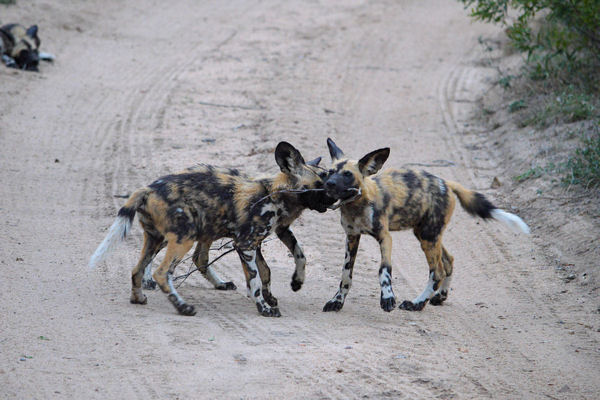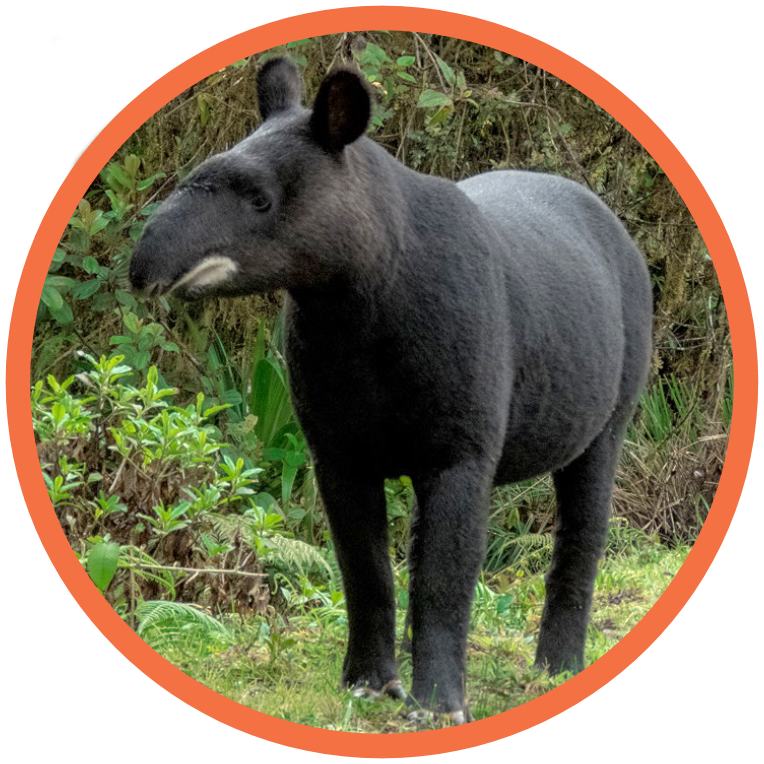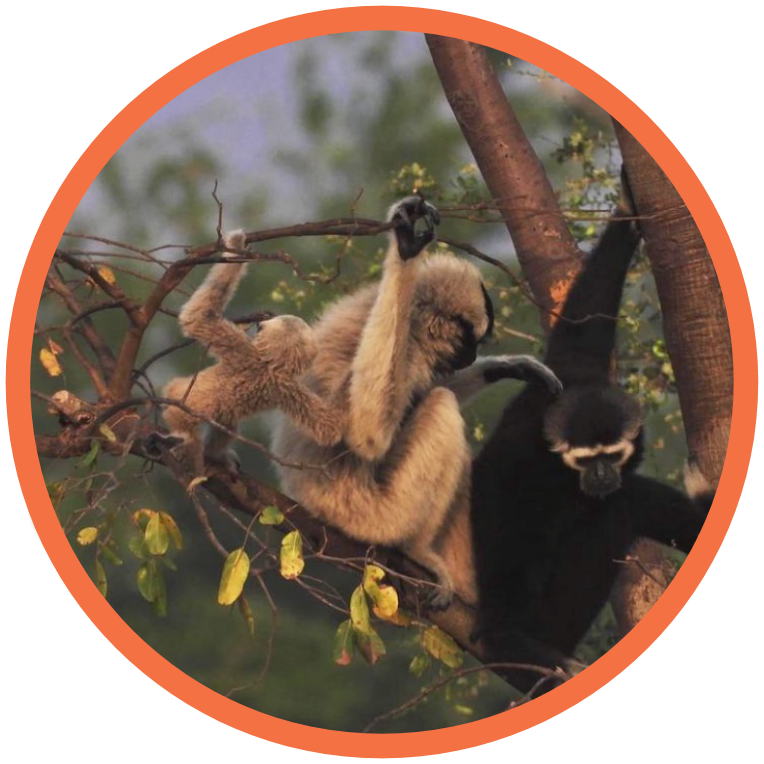IUCN Category:

ENDANGERED
C2a(i)
Species Name (Common):
African Wild Dog
Species Name (Scientific):
Lycaon pictus
The African Wild Dog, also known as the Painted Wolf, is a striking carnivore recognized for its distinctive mottled coat.
Habitat Type:
Forest, Savanna, Shrubland, Grassland, Desert
Geographic Range:

Range:
Historically, African Wild Dogs ranged across sub-Saharan Africa. However, today their range is much reduced due to habitat fragmentation and human activities. They are primarily found in eastern and southern Africa, with the largest populations in Botswana, Tanzania, and South Africa.
Estimated population of mature individuals:
only around 1,409
The West Africa and North Africa sub-populations are classified as Critically Endangered
Population Trend:
Decreasing
Primary Threats:
Humans – habitat loss, fragmentation, and degradation which increases their contact with people and domestic animals, resulting in human-wildlife conflict and transmission of infectious disease. Also resulting in smaller areas to roam and hunt, given the large distances they cover. Loss of genetic viability resulting from small population size and isolation is a risk.
Conservation Efforts:
Conservation efforts for African Wild Dogs focus on habitat protection, anti-poaching initiatives, and reducing human-wildlife conflict. Vaccination campaigns target diseases like rabies and distemper. Translocation and reintroduction programs aim to strengthen populations, and protected areas like national parks are crucial for preserving their dwindling numbers.
Importance in Ecosystems
Apex Predators:
African Wild Dogs play a crucial role as apex predators in their ecosystems. By regulating prey populations, they help maintain the balance between herbivores and vegetation. This prevents overgrazing and supports biodiversity. Their hunting behaviour also provides scavenging opportunities for other species.
Here are some key characteristics:
Physical Description
Size and Weight:
They are medium-sized canines, standing about 60–75 cm (24–30 in) at the shoulder, and their length ranges between 75–110 cm (30–43 in), excluding the tail.
Males and females are roughly the same size, weighing between 18–36 kg (40–79 lbs), with some variation depending on their habitat.
Appearance:
The fur of their distinctive mottled coat consists of irregular patches of black, brown, yellow, and white, giving it a unique appearance. It has large rounded ears, a slender body, and long legs, adapted for endurance hunting.
The body of an African Wild Dog is lean and muscular, built for long-distance chases rather than short sprints. Their long legs and slender physique enable them to pursue prey over great distances at speeds of up to 60 km/h (37 mph). Their large, rounded ears aid in dissipating heat and enhancing hearing.
Behaviour and Social Structure:
African Wild Dogs are highly social animals, living in packs that can range from 2 to 27 individuals, though typically around 10. They have a remarkable sense of cooperation and teamwork when it comes to hunting and raising young. Unlike many predators, they share food and care for injured or sick pack members.
Each pack is led by a dominant breeding pair—an alpha male and female. Only the alpha pair breeds, while the rest of the pack helps raise the pups. The bond between pack members is strong, and they are known for their altruistic behaviour, including caring for older or injured dogs.
Communication:
Communication among African Wild Dogs is sophisticated and includes vocalizations such as squeaks, whines, and hoots. They also use body language and facial expressions to maintain pack cohesion and coordinate during hunts. Their large ears enhance their ability to communicate across distances.
Hunting:
African Wild Dogs are renowned for their exceptional hunting abilities, which rely on stamina, speed, and cooperation. They hunt in packs, typically targeting medium-sized ungulates such as impala, gazelles, and wildebeest. Unlike solitary predators, they work as a team, chasing prey over long distances to exhaust it.
Their hunts begin with a silent, strategic approach, and once the prey is targeted, the pack pursues it relentlessly, reaching speeds of up to 60 km/h (37 mph). They use their endurance to tire the animal before closing in for the kill. The pack members then take turns attacking, often pulling down their prey by the legs to immobilize it.
African Wild Dogs have one of the highest hunting success rates of any large carnivore, with about 60-90% of their hunts ending in a kill, compared to around 30% for lions. Once the prey is captured, the food is quickly shared among the pack, with priority given to nursing mothers, pups, and sick or injured members, showing a high level of cooperation.
Latest research shows decisions by the pack, like “hunting-or-not?”, involve the dogs voting by way of sneezes! The sneezes act as a type of committee meeting, and when the sneezes reach a threshold the pack changes activity.
Diet:
They are carnivorous and primarily hunt medium-sized ungulates, such as impalas, wildebeests, and gazelles.
Habitat:
They inhabit a variety of environments, including savannas, grasslands, and open woodlands. They prefer regions with minimal human disturbance and sufficient prey availability.
Lifespan
In the wild, African Wild Dogs have an average lifespan of 7 to 11 years.
Other Endangered species that need your help …





















